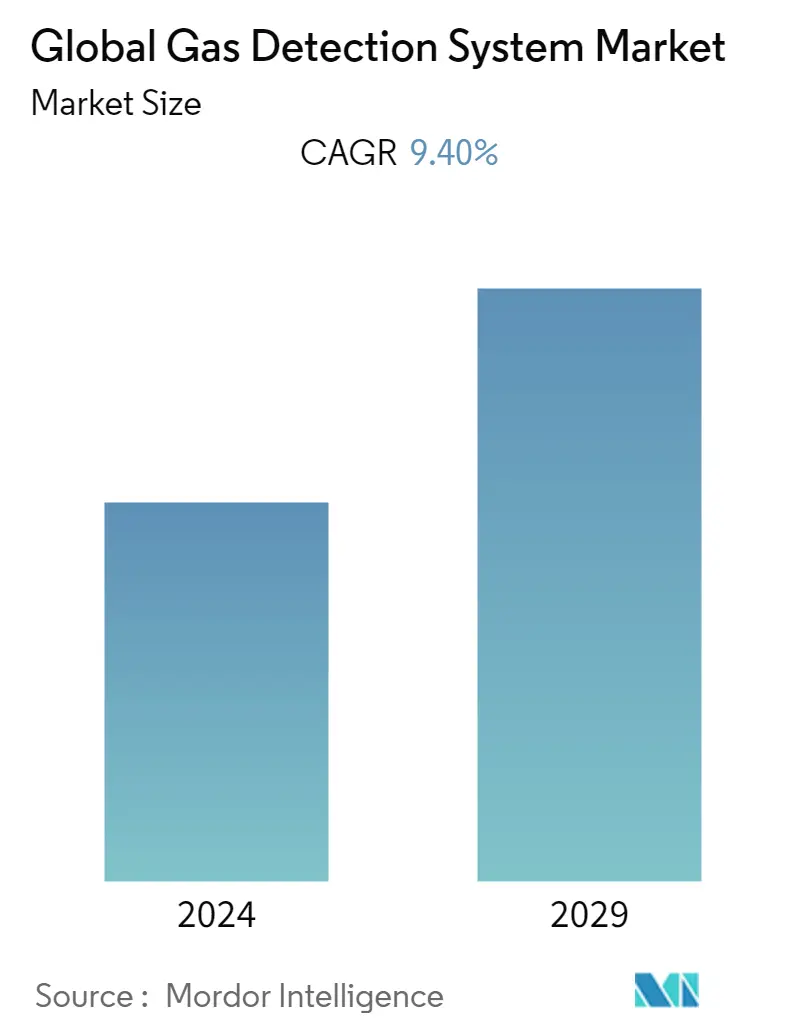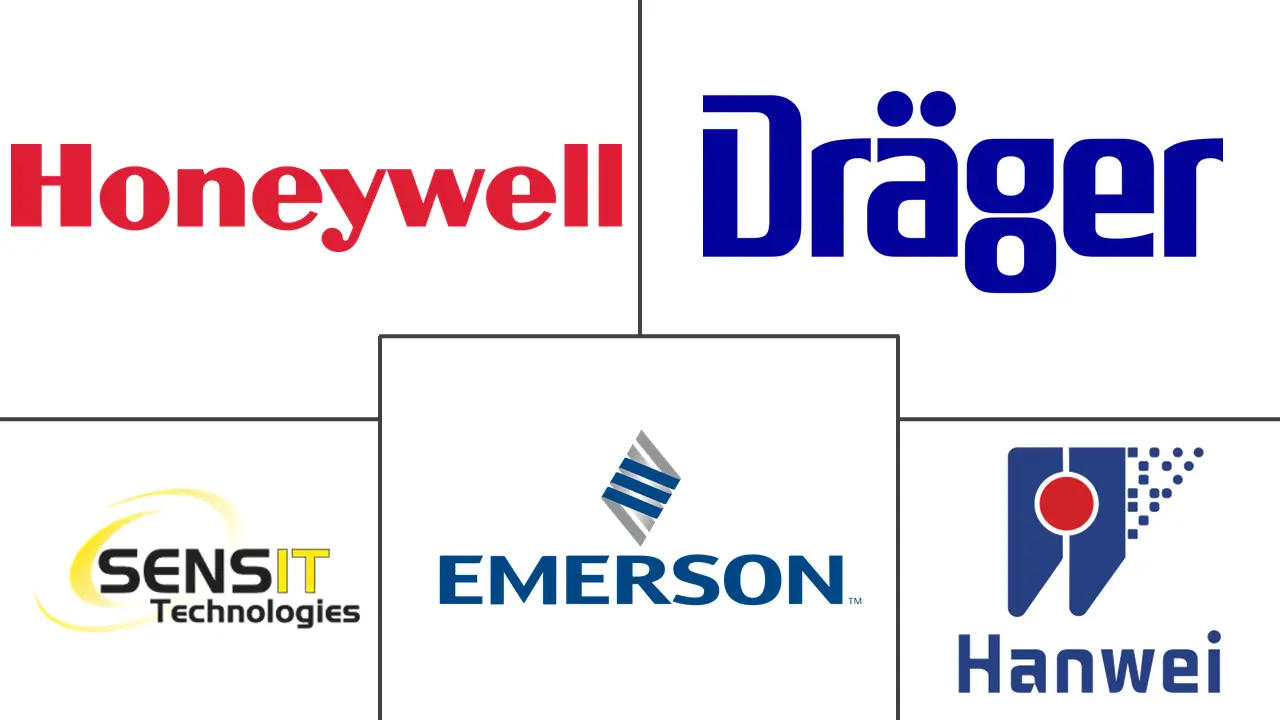Market Size of Global Gas Detection System Industry

| Study Period | 2019 - 2029 |
| Base Year For Estimation | 2023 |
| CAGR | 9.40 % |
| Fastest Growing Market | Asia-Pacific |
| Largest Market | North America |
| Market Concentration | High |
Major Players
*Disclaimer: Major Players sorted in no particular order |
Need a report that reflects how COVID-19 has impacted this market and its growth?
Gas Detection System Market Analysis
The Global Gas Detection System Market is expected to grow at a CAGR of 9.4% during the forecast period.
- The proliferation of handheld devices has led to developments in the field of gas sensors, detectors, and analyzers, which has considerably widened the scope of application across multiple end-user segments. Due to their chemical composition and properties, metal oxide gas sensors are well-suited for various applications, including detecting all reactive gases. Depending on the material used and the gases that must be detected, typical operating temperatures range between 300°C and 900°C.
- Currently, some prominent companies are developing products across the detector and analyzer segment application across clinical assaying, environmental emission control, explosive detection, agricultural storage, shipping, and workplace hazard monitoring. For instance, in March 2021, DD-scientific announced the launch of electrochemical gas sensors called the DceL suite for industrial safety. The products can measure oxygen, carbon monoxide, hydrogen sulfide, nitrogen dioxide, sulfur dioxide, and ammonia.
- In addition, governments worldwide are increasingly setting targets to reduce the emission of greenhouse gases and are adopting stringent regulations to tackle emission rates. For instance, the EU has set itself a net-zero greenhouse gas emissions goal by 2050. Such developments are expected to increase the adoption rates of gas detectors further.
- Such an increased focus on reducing greenhouse gasses is one of the primary factors driving the demand for the market studied. In line with this, governments across the globe are increasing investments to reduce emissions from the oil and gas sectors. For instance, in August 2022, the US Department of Energy announced funding up to USD 32 million for research and development of new monitoring, measurement, and mitigation technologies to help detect and reduce methane emissions across the oil and natural gas producing regions across the United States.
- The COVID-19 pandemic and recent lockdown restrictions affected industrial activities across the world, highlighting supply chain disruptions, lack of availability of raw materials used in the manufacturing process, labor shortages, and fluctuating prices that could cause the production of the final product to inflate and go beyond budget, shipping problems, etc. Although around May 2020, many of these industrial sites resumed their operations, the fluctuation caused starting four months in 2020 resulted in order delays and lead time across the gas sensors, analyzer, and detector supply chain 2020.
- The pandemic has led to new applications of gas detection systems. In January 2021, Teledyne Gas and Flame detection launched portable gas detectors for staff protection during the pandemic. The detectors monitor the CO2 concentration to control the Covid-19 outbreak in the facility. In addition, guidance for reducing the risk of exposure to the Covid-19 virus by major authorities is also developing a need for gas detectors. The Occupational Safety and Health Administration (OSHA) announced guidelines to reduce the exposure of the virus in different end-user industries such as oil and gas and others.
